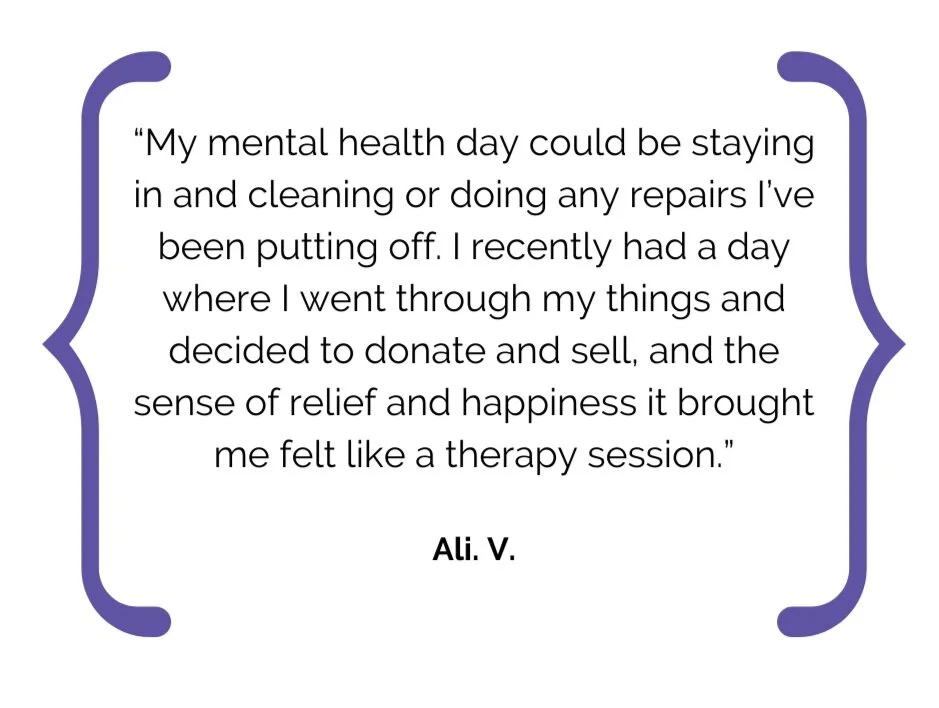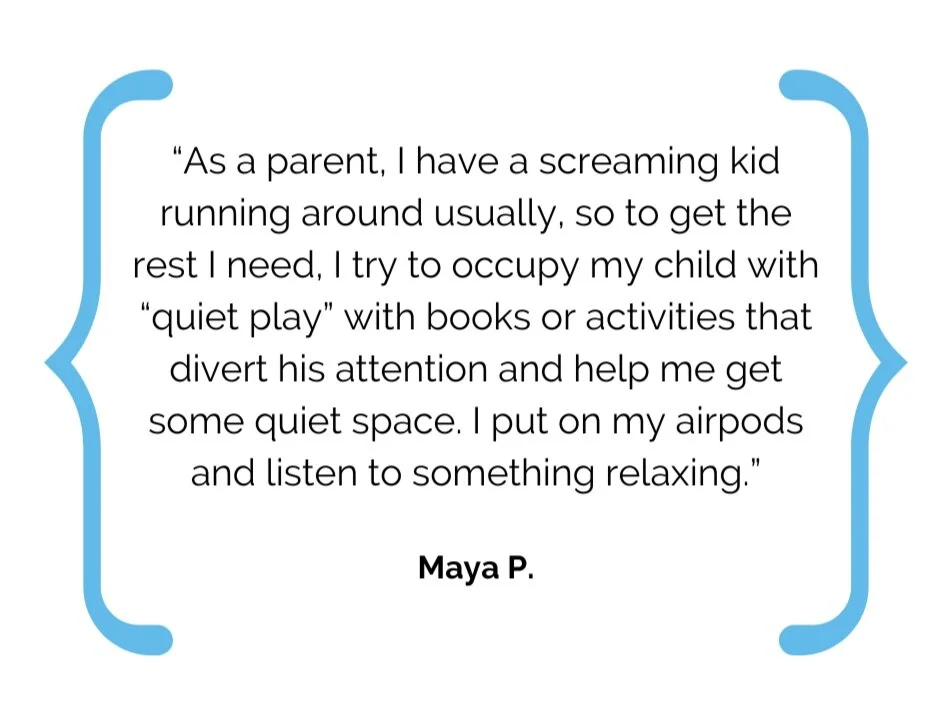Take a Real Mental Health Day (that helps your mental health)
A peaceful woman embracing the sun.
I have a question that I need to ask:
What exactly is a mental health day?
I know what it is in theory - a day to spend on self-care and do whatever you need to care for your mental health. In HR, we like to talk about ensuring people have a space to say ‘I just need a day’ and not feel guilty for taking care of themselves.. In theory, mental health days seem like perfect solutions to the stress, overwork, and burnout we all seem to be feeling right now.
In practice, I’m not sure if we’re doing them “right”. Especially from the perspective of People Ops leaders. Of course, everyone is entitled to do whatever self-care practices serve them best. What are best practices to support employees with their mental health days? What do we hope for the outcome of a mental health day? An informal poll of friends and colleagues revealed that mental health days ranged from things like exercising, binge watching favorite tv shows, cooking, cleaning, spa days, therapy, sleeping, retail therapy, secretly working and regretting it, and more.
All these activities sound great, but it made me wonder - what are the best things for mental health. As someone who likes to optimize a day off, I want to know what are the things I can do to see the biggest impact on my mental health? So I did some research. The top three things I found are sound, but not always realistic based on real-life situations.
The Ideal vs. The Reality
The Ideal: Across the board, the top thing seemed to be to get rest - get a full 8 to 10 hours of sleep. Practice good sleep hygiene - no screen time before or right after. Naps are encouraged. “The part of the brain that interprets our thoughts, feelings, and impulses is particularly sensitive to the impact of sleep,” says Alicia Clark, Psy.D., a licensed clinical psychologist.
The Reality: “I read my favorite book, go for a run, and take a bunch of naps. I don’t always have time to take a long nap or get 8 hours of sleep, but I take short naps when I can.” - Shirley C.
The Ideal: Set an intention for the day to reduce negative energy and do things you deeply enjoy. This means choosing activities that make you happy.
The Reality: “I hate planning the day. I’d rather see where the day takes me. I might wake up, make a huge pot of coffee, and drink it for an hour while relaxing on the couch. If I feel like it, I may exercise, or I may find a home project, put on youtube to learn how to do something, and spend the day working on my project.” - Harsha R.
The Ideal: Reconnect with your social circle. Mental health days don’t always have to be about alone time. In fact, many of us are experiencing extreme loneliness right now, and our workplaces aren’t helping. Use your mental health day to check-in with your friends or to spend time together.
The Reality: “I catch up on a ton of missed text messages, and I try to call a friend to catch up. I purposely don’t use Zoom and try not to worry about scheduling a set time because then it feels like work. If my friends answer, great, and if they don’t, they get a happy voicemail from me. Even the act of leaving a voicemail is refreshing.” - Mila S.
I learned that there is no one “right” activity that makes a mental health day the best, rather it is how you design your day and go about choosing what is best for you. Protecting the time and preventing stressors from creeping in is equally important. I also learned that when mental health days aren’t enough, you may want to seek out more help, and that is totally ok. There are still so many stigmas that people face when deciding to get professional help for depression and other mental health issues. Throw those stigmas out the window because mental health care is here to stay.
For employers
Do more than just tell your employees that they have mental health days they can use. Less than 30% of employees are ok about talking to their supervisors about mental health issues, and two thirds of people say that whatever mental health benefits they gained from time off, usually disappear in just a few days.
Encourage your teams to take more than just a day off here and there for a mental health boost. Train managers to help their reports find ways to take more time off in addition to mental health days. Using mental health days should be encouraged, but taking appropriate time off before a mental health day is ‘needed’ is even more important.
Some tips for People Ops Leaders:
Give a company wide mental health day off a month to help normalize the use of the time and terminology.
Suggest a regular practice to take off a Friday before a long weekend.
Offer later start times on certain days like Mondays, when we know it is harder to get going.
Add ‘mental health day’ to your HRIS so employees can clearly articulate the difference between a sick or vacation day (if they want to) and track how it is or isn’t being utilized.
Provide resources and benefits for employees to use during their mental health days. Work with your benefits provider to create an easily accessible trove of mental health resources.
Give employees a budgeting stipend to use for resources such as therapy, black-out shades, or healthy meals during their mental health days. If you don’t have a big budget, you can still do something small like provide a gift card to a place that does healthy meals. Small gestures go a long way in helping people get out of a rut.
As the pandemic continues, it is vital for employers to take a stand and support their employees. Mental health is on the forefront of overall health and wellness. It is time to take it seriously and take real action to create a healthier, happier workforce.
Mental health days matter! Let’s make the most of them, together.



